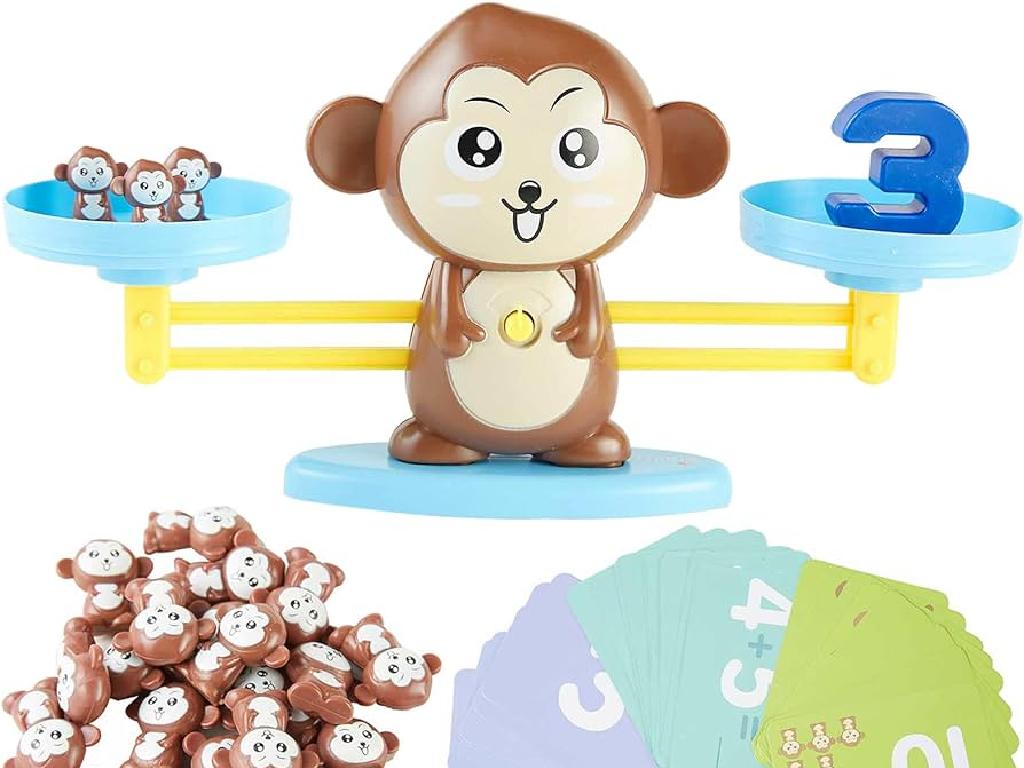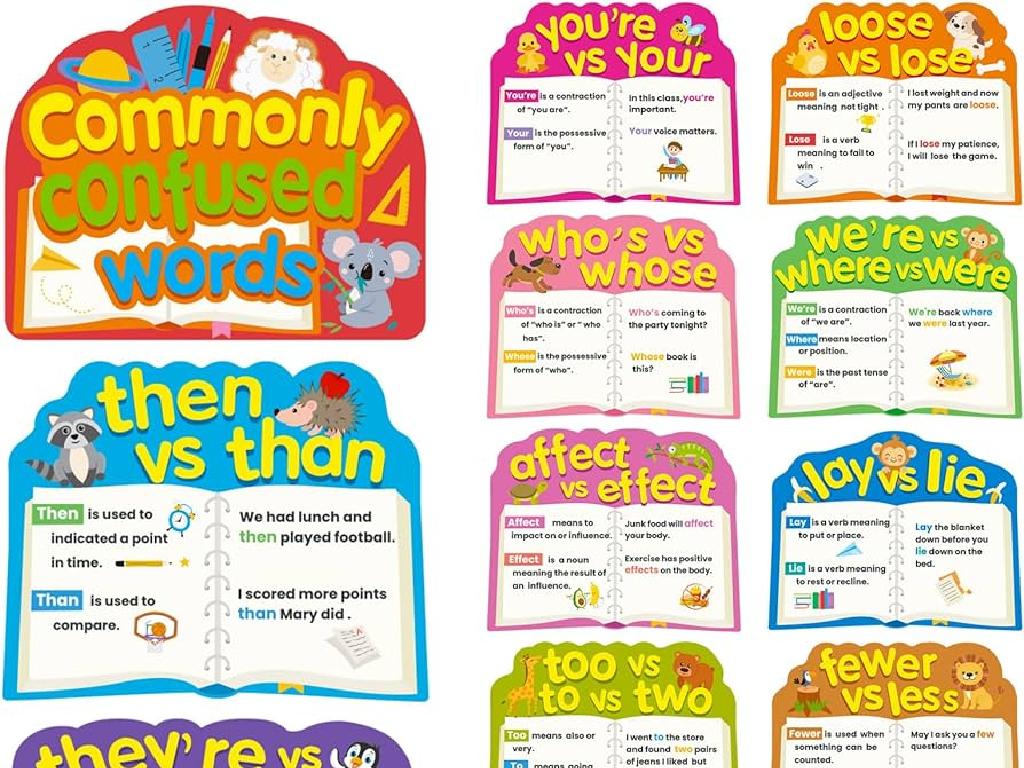Identify Minerals Using Properties
Subject: Science
Grade: Fourth grade
Topic: Rocks And Minerals
Please LOG IN to download the presentation. Access is available to registered users only.
View More Content
Welcome to the World of Minerals!
– Become a Mineral Detective
– What are minerals?
– Minerals are natural, solid substances found in Earth
– Minerals in daily life
– Minerals are in items like phones, cars, and pencils
– Identifying mineral properties
– We’ll learn to identify them by color, streak, and hardness
|
In this introductory slide, we aim to spark excitement about becoming ‘Mineral Detectives.’ Begin by explaining what minerals are: naturally occurring, solid substances with a definite chemical composition and crystal structure. Highlight how minerals are a part of everyday life, found in common items such as electronics, vehicles, and even school supplies. Emphasize the importance of being able to identify minerals by their properties, such as color, streak (the color of the mineral in powdered form), and hardness (how easily it can be scratched). This will set the stage for hands-on activities where students will test and observe different minerals. Encourage students to think about objects they use every day that might contain minerals.
What Are Minerals?
– Minerals: Naturally occurring
– Crystalline structure
– Atoms arranged in repeating patterns
– Unique chemical composition
– Every mineral has its own ‘recipe’ of elements
– Examples: quartz, feldspar, mica
– Common minerals found in rocks
|
This slide introduces the basic concept of minerals to the students. Minerals are substances that are formed naturally in the Earth through various geological processes. They are not man-made and each has its own unique crystalline structure, which means that the atoms in a mineral are arranged in a specific, repeating pattern. Minerals also have a distinct chemical composition, like a recipe, which makes each one different. Examples to be discussed include quartz, which is known for its hard and glassy appearance; feldspar, which is commonly found in granite; and mica, which can be peeled into thin layers. Encourage students to think about and discuss the properties that make each mineral unique and how they might identify them.
Exploring Mineral Properties
– Mineral colors vary widely
– Minerals can be red, blue, green, etc.
– Streak shows powdered mineral color
– Streak is the color of its powder form
– Luster describes light reflection
– Luster can be metallic or non-metallic
– Hardness indicates scratch resistance
– Use the Mohs scale to determine hardness
|
This slide introduces the basic properties used to identify minerals. Color is the most noticeable feature, but it can be misleading due to impurities. The streak test is more reliable because it shows the color of the mineral in its powdered form, which doesn’t change. Luster helps us understand how a mineral reflects light; it can be shiny (metallic) or dull (non-metallic). Hardness is measured using the Mohs scale and determines how easily a mineral can be scratched. This is a key property in identification. Finally, how a mineral breaks, through cleavage (flat planes) or fracture (irregular surfaces), can also be diagnostic. Encourage students to handle samples and perform simple tests to observe these properties.
Testing Mineral Hardness
– Understanding the Mohs scale
– A scale from 1 (soft) to 10 (hard) for minerals
– Talc vs. diamond hardness
– Talc is at 1, and diamond is at 10 on the Mohs scale
– Using objects to test hardness
– Fingernails (2.5) can scratch talc, coins (3) can’t scratch diamonds
– Observing scratch resistance
– Minerals that don’t scratch easily are harder
|
Introduce the Mohs scale of mineral hardness, which is a comparative scale from 1 to 10, with 1 being the softest mineral (talc) and 10 being the hardest (diamond). Explain that everyday objects have known hardness levels and can be used to test the hardness of minerals. For example, a fingernail has a hardness of about 2.5 and can scratch minerals that are softer than it, like talc. A coin, with a hardness of about 3, can scratch minerals of the same or lesser hardness but not harder minerals like diamond. Encourage students to bring in minerals or rocks from home to test their hardness in class. This hands-on activity will help solidify their understanding of the Mohs scale and how to identify minerals based on their properties.
Let’s Practice Identifying Minerals!
– Observe mineral properties
– Look at color, shape, texture
– Record observations on sheet
– Use the sheet to note details
– Guess the mineral’s name
– Use properties to make an educated guess
– Check your answer
– Compare with the correct answer
|
This slide is designed for a hands-on class activity where students will practice identifying minerals using their observable properties. Provide a variety of mineral samples for students to examine. They should use their Mineral Identification Sheets to record the color, shape, texture, and any other notable properties. Encourage them to make an educated guess about the name of the mineral based on these properties before revealing the correct answer. This activity will help reinforce their understanding of how each property can be used to identify different minerals. Prepare to guide them through the process and answer any questions they may have about the properties they observe.
Class Activity: Mineral Investigation
– Examine your mineral samples
– Note each mineral’s properties
– Look at color, streak, luster, and hardness
– Identify minerals using observations
– Use the property notes to figure out each mineral’s name
– Share findings with the class
|
This activity is designed to engage students with hands-on learning about mineral properties. Divide the class into small groups and distribute mineral samples to each. Provide worksheets for students to record observations such as color, streak, luster, and hardness. Teach them how to use these properties to identify different minerals. After the investigation, each group will present their findings. Encourage discussion about the different properties observed and how they led to the identification of each mineral. This will help students understand the practical application of their knowledge in geology. Possible activities include testing for streak on porcelain plates, using Mohs hardness scale, and observing luster by comparing to known samples.
Conclusion: Identifying Minerals
– Review mineral identification
– Recall color, streak, hardness, and luster.
– Importance of mineral ID
– Minerals have various uses in our daily life.
– Questions about minerals?
|
As we wrap up today’s lesson, let’s revisit the key properties that help us identify minerals: color, streak, hardness, and luster. Understanding these properties is crucial because minerals are not only fascinating but also form the building blocks of rocks and have numerous applications in our everyday lives, from the graphite in our pencils to the salt in our food. Encourage the students to ask any lingering questions they might have about minerals or their properties, and use this time to clarify any doubts. This will ensure that all students leave the class with a solid understanding of how to identify minerals using their distinct properties.
Homework Challenge: Mineral Detective
– Find a mineral or rock at home
– Use today’s lesson to identify it
– Look for color, streak, hardness, and more
– Note the properties you observed
– Write down texture, luster, and any unique features
– Bring your rock and notes to class
|
This homework activity is designed to reinforce the day’s lesson on identifying minerals using their properties. Encourage students to be observant and use the techniques learned in class, such as examining the color, streak, and hardness of the mineral. They should also consider the texture and luster, and any other unique features they can observe. Remind them to write down their observations as they will be sharing their findings in a show and tell session during the next class. This will help them to communicate their understanding of the lesson and learn from their peers’ findings as well.




